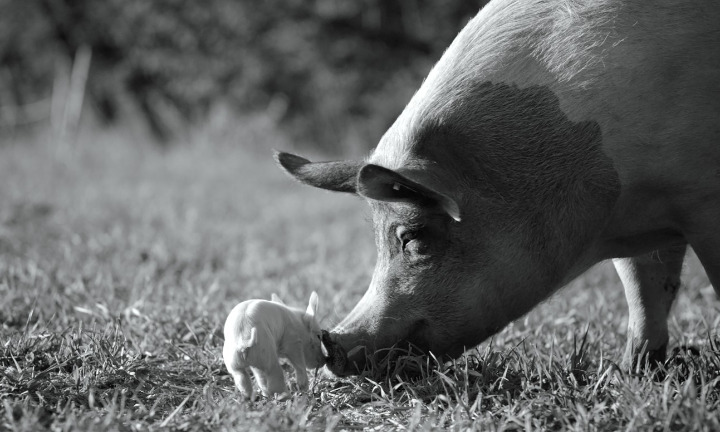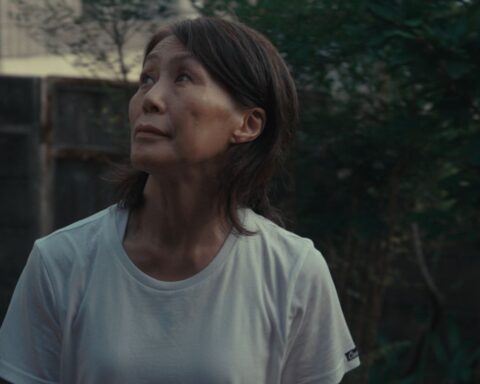In my corner of the filmmaking world, mostly filled with arty narratives, documentaries, and animation, Viktor Kossakovsky (Aquarela) is a big deal. He’s been winning awards since the early ‘90s for edgy docs, which use genre bending techniques to force audiences to become truly engaged with his subjects. In one film, he shot footage out of his window in St. Petersburg for over a year, turning viewers into the equivalent of neighbours, who become used to the sidewalk, the street, the buildings, odd people on the block and unnerving situations with road repair that seem to go on endlessly. In another, he painstakingly placed his two-year old son in a position so he would wander in front of a mirror for the first time, allowing us all to enjoy Syvato’s gradual revelation that the “other” fellow he’s seeing is, in fact, himself. (It was inspired by a famous experiment by the psychologist Jacques Lacan.)
Kossakovsky’s main actor in his new film Gunda is a sow, a large pig, who gives birth to a bunch of piglets as the film begins. There’s humour and a bit of dexterity in the scene as the baby pigs are seen sucking on Gunda’s udders as their brothers and sisters literally come out of her body, birth fluid still flowing, moving immediately for their first meal of mother’s milk.
Kossakovsky immerses us in a barnyard tale, which stars only chickens, cows and pigs in a fecund if somewhat neglected farm. The chickens are shown gingerly escaping from their coop, jumping about, led by a spectacularly mobile one-legged old chick, having the time of his life. The cows, too, enjoy their freedom as they gambol around their wooded area, sniffing at leaves.
The main focus remains on Gunda and her piglets, who gradually grow, taking their fill from their mother, while running and playing in the area right near their dwelling, which was purpose built by Kossakovsky’s crew so it’s easy for the viewer to see them inside as well as out.
There’s a delightful innocence to much of the film although Kossakovsky refuses to create a Disney product: there’s no music, everything is in seen in black and white and, of course, there isn’t any narration. But there is a story and a devastating one at that. Though we are spared the sight of any violence, the ending is heart-rending as the experience of a mother’s loss is shown clearly on the screen. Kossakovsky refers to Gunda as his Meryl Streep and whether what we see is absolutely real or somewhat manipulated by this master director, there’s no getting around the film’s emotional impact.
Kossakovsky, who is a big Russian, may be his country’s leading vegetarian. He’s been wanting to make this film for decades and was finally given funding in Norway which is where the doc was shot. Although most people don’t know Kossakovsky, we all know Joaquin Phoenix and happily the Oscar winning actor is also a vegetarian. With Phoenix as executive producer, it’s possible that many will get a chance to see this brilliant, unsettling, documentary feature. Whether you’re a vegetarian or not, Gunda is well worth seeing.
Gunda streams via Hot Docs Ted Rogers Cinema beginning June 17.
1













